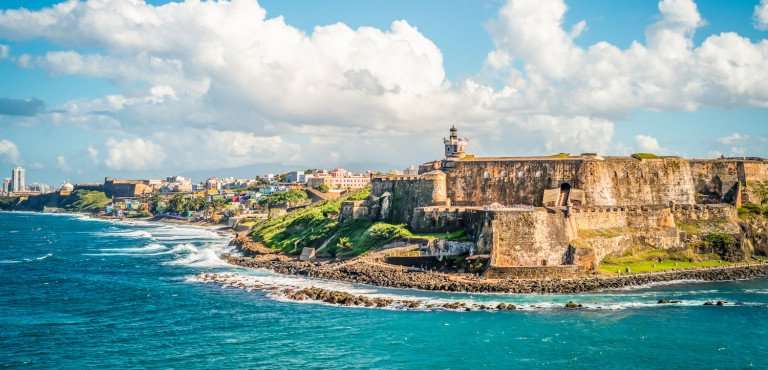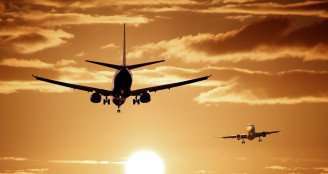Please note: these reflections are as of March 5, 2020, and based on available information at the time.
Over 16 million Americans traveled to Europe in 2019, and over 5 million traveled to Asia. (1) It is clear that Americans love to travel, and we love to travel internationally.
And yet right now, we are seized by indecision about how the current COVID-19 illness, caused by the new strain of Coronavirus, will affect our travel.
Can we travel? Should we travel? Where should we travel? What happens when we travel? And what happens if the coronavirus affects our travel?
It is almost impossible to overstate the effect something like a world-wide epidemic can have on the tourism industry. Misinformation, hysteria, and over-reporting by the mass media certainly occur. But the crisis is real and travelers are right to have questions.
We are not doctors or epidemiologists, but we are travel experts with decades of experience. We have survived other travel crises including SARS, Ebola, H1N1, the “bird flu,” and, most horribly, September 11th.
So based on our experience, this is our advice on what to do if you are worried about traveling.
1) Wait.
If your trip is not imminent – and by that I mean in the next 30 days – wait and see. The situation is changing every day, and it is absolutely impossible to tell what the situation will look like in a month. In Italy, for instance, the government expects to know late-March or April whether the extreme measures they have taken have been effective.
As a tour operator, we understand the uncertainty is uncomfortable, but waiting as the situation develops is the best course of action.
2) Contact your tour operator and airline.
We understand your nervousness. These are unusual circumstances, and virtually everyone in the travel and tourism industry that we’ve talked to has been eager to be flexible and help travelers find options.
For instance, when the coronavirus outbreak increased in Italy we immediately offered to let our travelers to Italy for March and April rebook to later in the year without penalty, and without rate increase even if changing to peak season. Some of our travelers have chosen to still travel, others have preferred to put off their trip to later in the year.
For our travelers scheduled to go to Italy in May we have postponed final payment due dates to 30 days prior to their start date in order to allow us more time to assess the situation.
Read more on Italy and the Coronavirus.
Airlines too are being more flexible than ever, letting travelers change dates with no fees and issuing travel vouchers for future travel.
3) Inform yourself.
Don’t just react to scintillating headlines, inform yourself about the real risks you face. That risk, it seems, will be largely dependent on your age and how healthy you are. If you are older and with underlying health issues, only you can assess your risk tolerance.
Every source we’ve seen (and we have been poring over many) recommends as the best prevention diligent hand washing and not touching your face. If you are young and healthy, experts say that the likelihood of your become seriously ill are slim. (2)
Our travelers seem to be focusing on risks in three areas:
Risks by Destination
Where do you plan to travel? This is the first question to consider, and we can only assess the situation as it stands today.
Per the World Health Organization’s March 5th situation report, for example, there were 282 confirmed and suspected cases in France and 4 deaths. In a country of 67 million that represents .00042% of the population. (3)
Let’s look at Vietnam – in Asia! You might think that all of Asia has fallen prey to the epidemic, but per the March 5th report there were 16 cases in Vietnam. That represents .0000168% of the population, which indicates that the likelihood of coming into contact with someone infected is infinitesimal. (3)
What about Italy? Per the March 5th report, Italy had 3089 cases, representing .005% of the population. We are not implying that the situation is not serious, but according to statista.com, on March 4 more than 88% of those cases were in Lombardy, Emilia-Romagna, and the Veneto. (4) This gives you an idea of why our friends in Tuscany, Lazio, Sicily, Puglia, and Campania wonder why people are concerned to travel there. (For updated information please see our March 10 post: Italy and the Coronavirus.)
Risks of Flying
Some travelers are worried that they will catch the coronavirus on their flight, but if you inform yourself, you’ll learn that those fears are not based on the facts of air travel:
Contrary to popular belief, cabin air is less of a concern; virtually all international jetliners are equipped with High Efficiency Particulate Air (HEPA) filters, similar to those used in hospital operating rooms; cabin air is refreshed every two to three minutes. (5)
Sources are saying that the virus does not spread through the air, but through droplets when someone coughs or sneezes. So what about the seat or the tray in front of you? The airlines are required to clean and sanitize the cabins, but even so doctors reiterate that the number one transmitter of the virus is the human hand:
Because transmission most often occurs person to person, the inanimate environment of the airplane isn’t really the problem, says Schaffner [a professor of medicine in Vanderbilt University’s division of infectious diseases].
It’s still wise, he says, to wipe down surfaces — but ultimately it’s handwashing that is the most important preventative step.
“Even if there is virus in the inanimate environment, it’s not going to jump off the seat and bite you in the ankle. You’ve got to touch it, and then touch your nose or your mouth,” Schaffner explains. (5)
Risks of Quarantine or Denied Entry to the US
We have heard many travelers say that they are worried they will not be allowed back into the US. There are restrictions on travelers arriving from China or Iran. Foreign travelers from other countries, such as Italy and South Korea, could be referred for additional screening if they exhibit symptoms of illness and could be denied entry. US citizens cannot be denied entry to the US, although they can be detained or subject to additional screening. (6)
So what I think most of our travelers mean is that they are afraid of being detained and quarantined.
US citizens evacuated from Wuhan, China, were put in a 14-day quarantine at US military bases. (7) There are currently 15 army bases in the US that can serve as formal quarantine facilities, and the rule of thumb for time in quarantine is 14 days. (8)
Citizens who display symptoms of illness who have traveled to other countries where there have been significant outbreaks have to this point been asked to self-quarantine, or to stay home. (9) Similarly, people who have come into contact with someone who has the disease have also been asked to self-quarantine – regardless of their travel history.
So, if only a very small number (a few hundred) Americans have seen official quarantine at Army bases, the more likely risk, which remains statistically very unlikely, is to be asked to self-quarantine. And this is a risk that exists even for Americans who have not traveled anywhere. (9)
Again, you have to ask yourself the specific question: in the unlikely event I were asked to self-quarantine for 2 weeks upon my return, would that be something I could do?
4) Find out what it’s really like at your destination.
We’ve asked our partners in Italy’s Tuscany, Lazio, Puglia, and Campania regions what it’s like there. We asked whether trains were running and the answer was uniformly yes. Are museums and restaurants open? The answer, again, was yes, although many museums are controlling the number of people who can enter at one time. Is everyone walking around with face masks on? No. All of our friends said you will see a few, mostly tourists, and you’ll see more at the airports and train stations, but the vast majority of Italians in unaffected areas are living their lives as they normally would. (For updated information please see our March 10 post: Italy and the Coronavirus.)
France, the UK, Spain, Portugal, and Greece – all popular destinations with our clients – are not under travel advisories and life has been carrying on as normal.
And don’t forget, we have many trips outside of Europe, including in the US and South and Central America.
5) Consider the benefits of traveling this spring.
We are not recommending travel for people with serious health issues. But if you are one of the billions of healthy people, there are plenty of places you can travel to now.
What is the advantage of traveling this spring? You will find great rates, fewer crowds, and more flexible cancelation/change options.
Plus, you are supporting the tourism industry of your destination of choice, and they will thank you for it.
Please note: these reflections are as of March 5th. See also our March 10 post: Italy and the Coronavirus.
Sources
1. Per the National Travel & Tourism Office: https://travel.trade.gov
2. Center for Disease Control “Prevention and Treatment” https://www.cdc.gov/coronavirus/2019-ncov/about/prevention-treatment.html
3. World Health Organization March Situation Report: https://www.who.int/docs/default-source/coronaviruse/situation-reports/20200305-sitrep-45-covid-19.pdf?sfvrsn=ed2ba78b_2
4. “Coronavirus (COVID-19) cases in Italy as of March 4, 2020 by region,” https://www.statista.com/statistics/1099375/coronavirus-cases-by-region-in-italy/
5. The Wall Street Journal, “All Your Coronavirus Travel Questions Answered,” updated March 5, 2020.
6. ACLU Northern California, “Know Your Rights: US Airports and Points of Entry,” October 23, 2017. https://www.aclunc.org/our-work/know-your-rights/know-your-rights-us-airports-and-ports-entry
7. The New York Times, “195 Quarantined in California after Fleeing Coronavirus Epicenter,” January 31, 2020. https://www.nytimes.com/2020/01/31/health/quarantine-coronavirus.html
8. Business Insider, “229 US Citizens were released from coronavirus quarantine this week. Here’s where the 15 military-approved quarantine camps are,” February 20, 2020. https://www.businessinsider.com/us-military-bases-coronavirus-quarantine-locations-2020-2
9. As one example, CNBC, “83 New York residents placed in self-quarantine after returning from coronavirus-stricken China,” February 26, 2020. https://www.cnbc.com/2020/02/26/coronavirus-new-yorkers-self-quarantined-after-returning-from-china.html Or another, CNN Health, “Thousands of US residents have been asked by state governments to ‘self-quarantine’: Here’s what that looks like,” March 6, 2020. https://www.cnn.com/2020/03/06/health/self-quarantine-explainer-procedures/index.html



















